Your target customers may discover your website through ads, search, word of mouth or offline channels like direct mail or events, but when they arrive, 99% of them usually skim your home page and bounce.
The fastest-growing companies show each visitor the most relevant content to immediately signal that they are a good fit and worth further investigation.
While there are hundreds of ways to personalize and optimize your website, knowing what to focus on, and when, can be difficult when you’re seeking maximum impact. After years of experience with website personalization, we’ve gathered unexpected, yet effective and scalable tactics from some of the fastest-growing companies.
If you execute all 10 of these tactics well, we’re confident they’ll help you grow faster and look really, really smart while doing it.
Help TechCrunch find the best growth marketers for startups.
Provide a recommendation in this quick survey and we’ll share the results with everybody.
Promote the right content to the right people
You spend a lot of time creating content for your customers, but they typically have a hard time discovering the content that’s relevant to them. Consider adding a personalized banner that surfaces the right piece of content to the right visitor.
Banners are a great way to capture the attention of target accounts during the evaluation stage. And banners promoting white papers or linking to analysts reports are relatively quick and easy to implement.
When creating your banner content, keep the copy in the banner brief and clear — a short, crisp sentence that engages interest. Your CTA should be strong and actionable and tell the visitor what they’ll be getting.
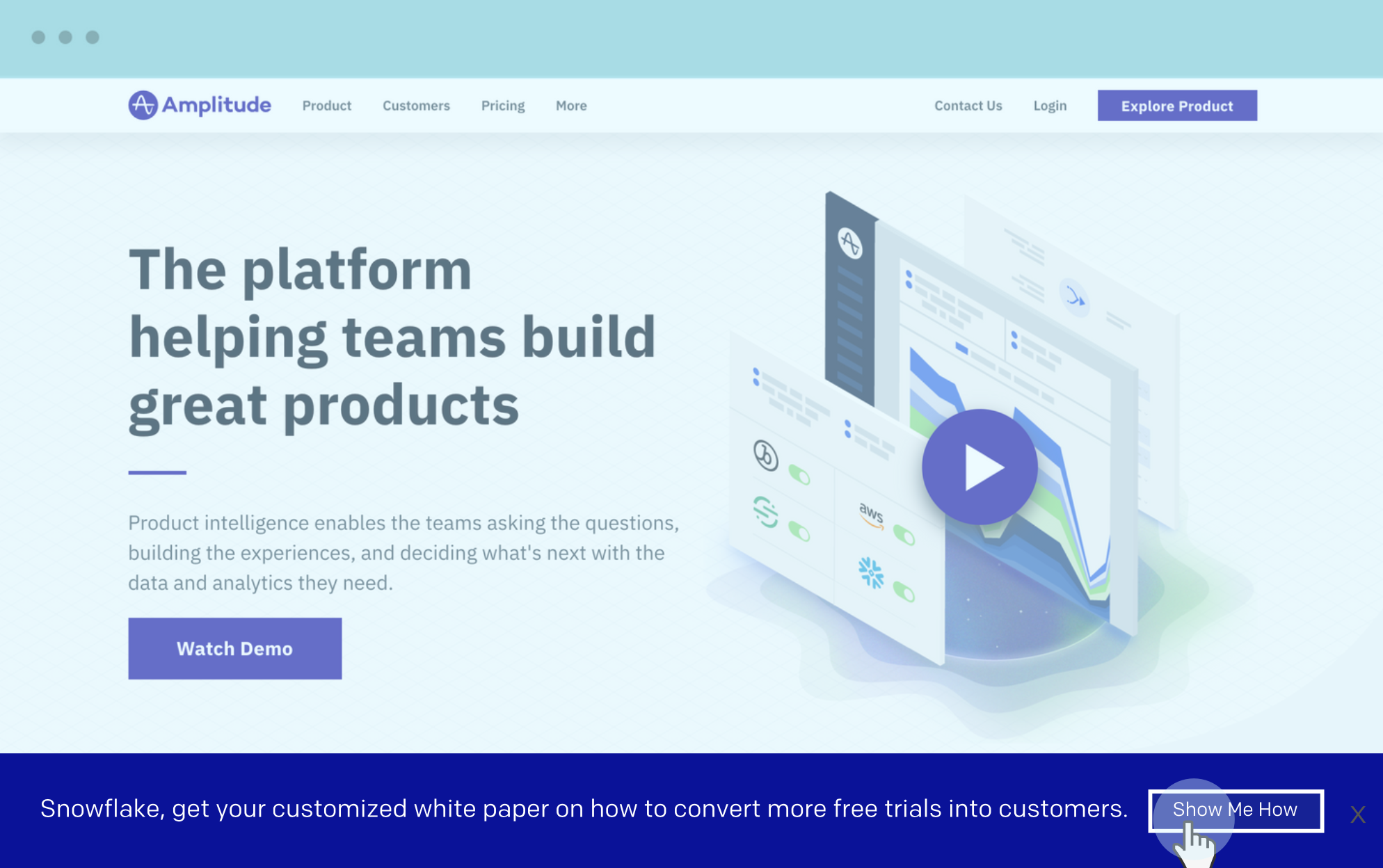
Image Credits: Mutiny
Invite prospects to an event with their peers
Creating a peer set focused on solving common challenges is a powerful event tactic that we’ve used. We’ve also seen it in use by companies like Segment.
Create a personalized invitation to an event that’s about your target account’s vertical or use case. The component should drive to a landing page for a recurring event like a weekly webinar or to a major tentpole event.
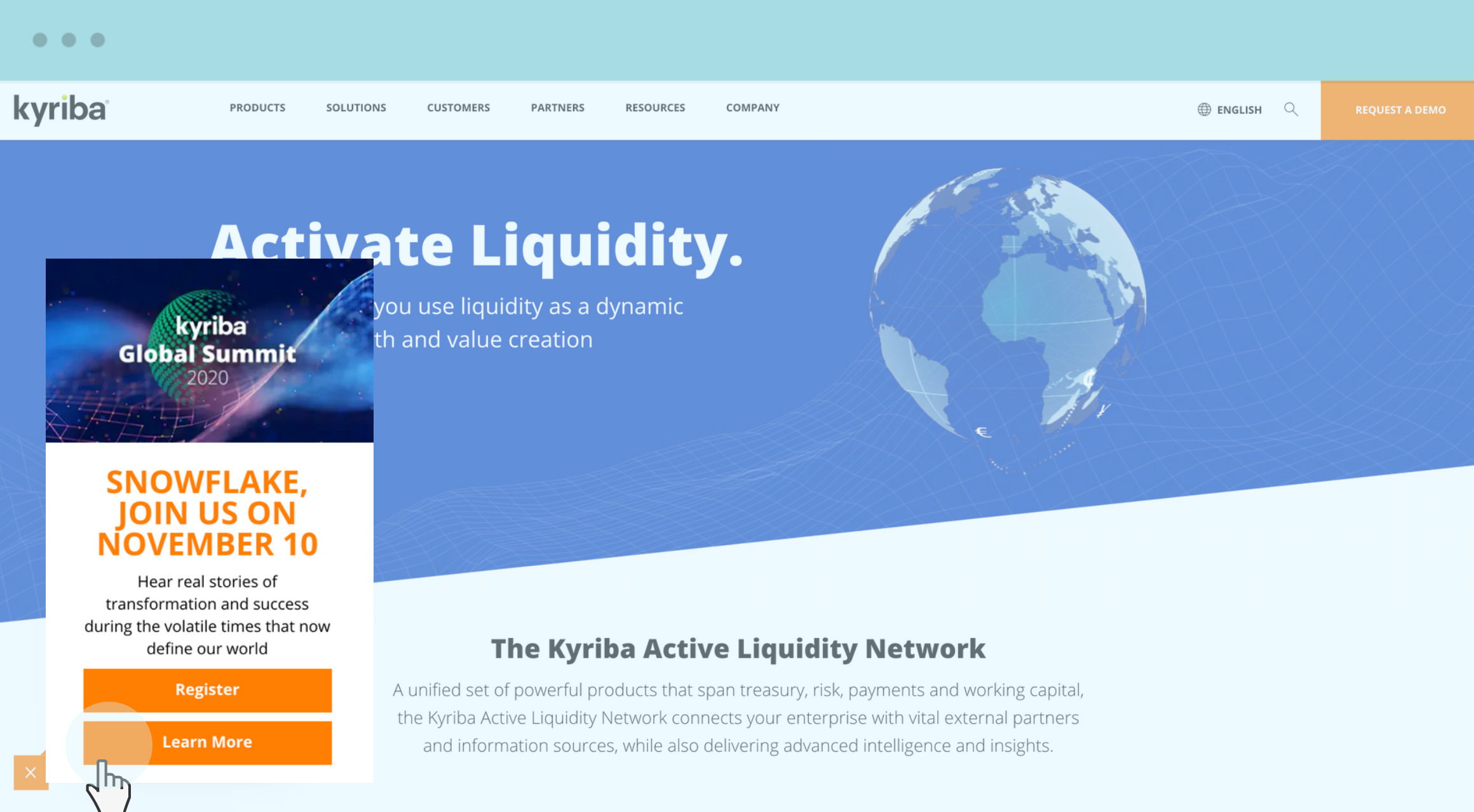
Kyriba achieved a 2.2% click-through rate with this tactic. For a typical B2B website with traffic of ~50,000 visitors a month, that’s 1,100 target account engagements with only an hour of effort. Image Credits: Mutiny
Leverage your prospect’s competitors
We’re going to go out on a limb and guess that whatever business you’re in, you pay special attention to the moves your competitor makes. Here’s another crazy idea: The same is true for your target accounts.
Use this inherent drama to create personalized banners that drive to a case study showing target accounts how their competitor is using your product. While implementing this can be fairly straightforward, it will still take some leg work to create the competitor case study for each target account vertical.
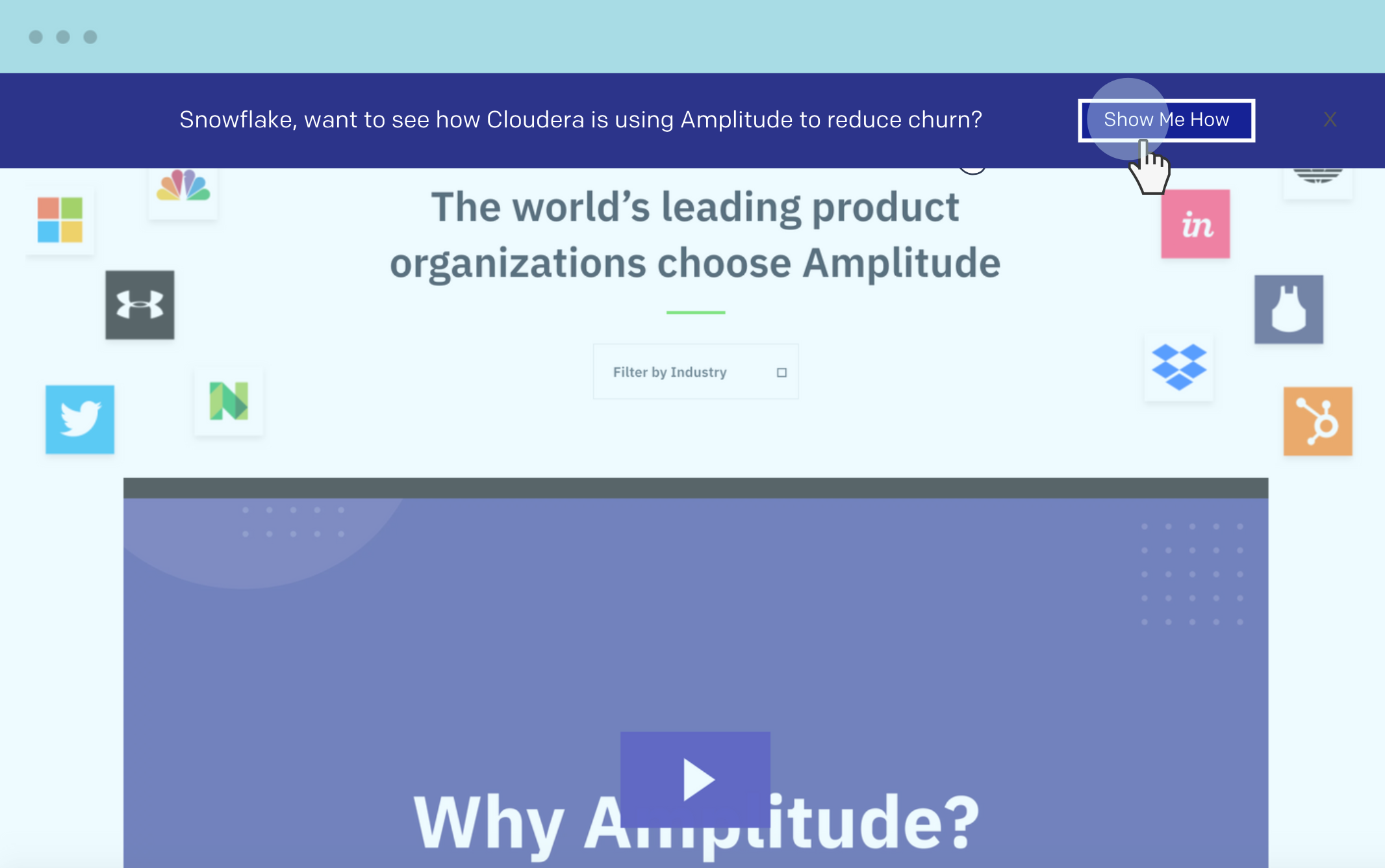
Image Credits: Mutiny
Bonus hack: Target a vertical and choose an industry leader versus creating one-off competitors for each company. Perhaps you take your Capital One case study and show it to all banks or even all finance. Or, show your Adidas case study to Nike, Athleta, Asics, New Balance and Under Armour, but you show your Gap case study to the rest of retail.
What if a prospect is already using one of your competitors?
If a target account is currently using one of your competitors, don’t worry — especially when they land on your website. Just be sure to be ready. Use first-party data to identify target accounts using competitors and create a personalized page detailing why they should switch.
You’ll need to decide on exactly the right format, but be sure to keep it straightforward, informative and brief.
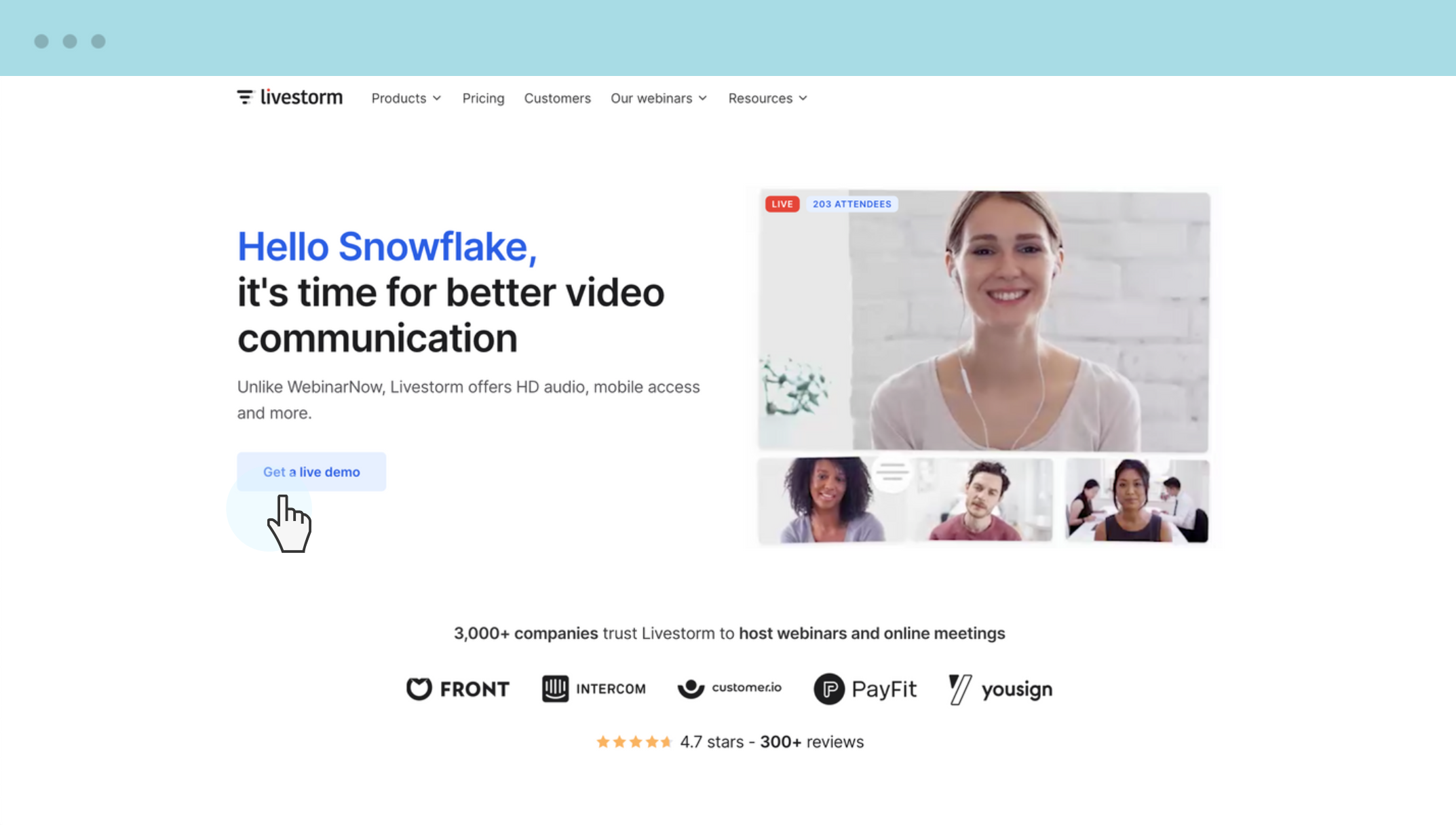
Image Credits: Mutiny
Show them the ROI
You’ve heard the saying, “Brevity is the essence of wit.” Well, to that we’d add, “Relevance is the essence of conversion.”
When a target account lands on your pricing page, one of the most helpful things you can do is surface ROI for them right away. The easiest way to calculate your ROI is by vertical.
For a productivity company, you might calculate the value of increased productivity per employee. You can further personalize the ROI by having an account-specific lever such as number of employees multiplied by the unit cost (e.g., 30 employees x $10,000/year). Either way, you can show a target account a more tailored ROI banner when you identify them on your site.
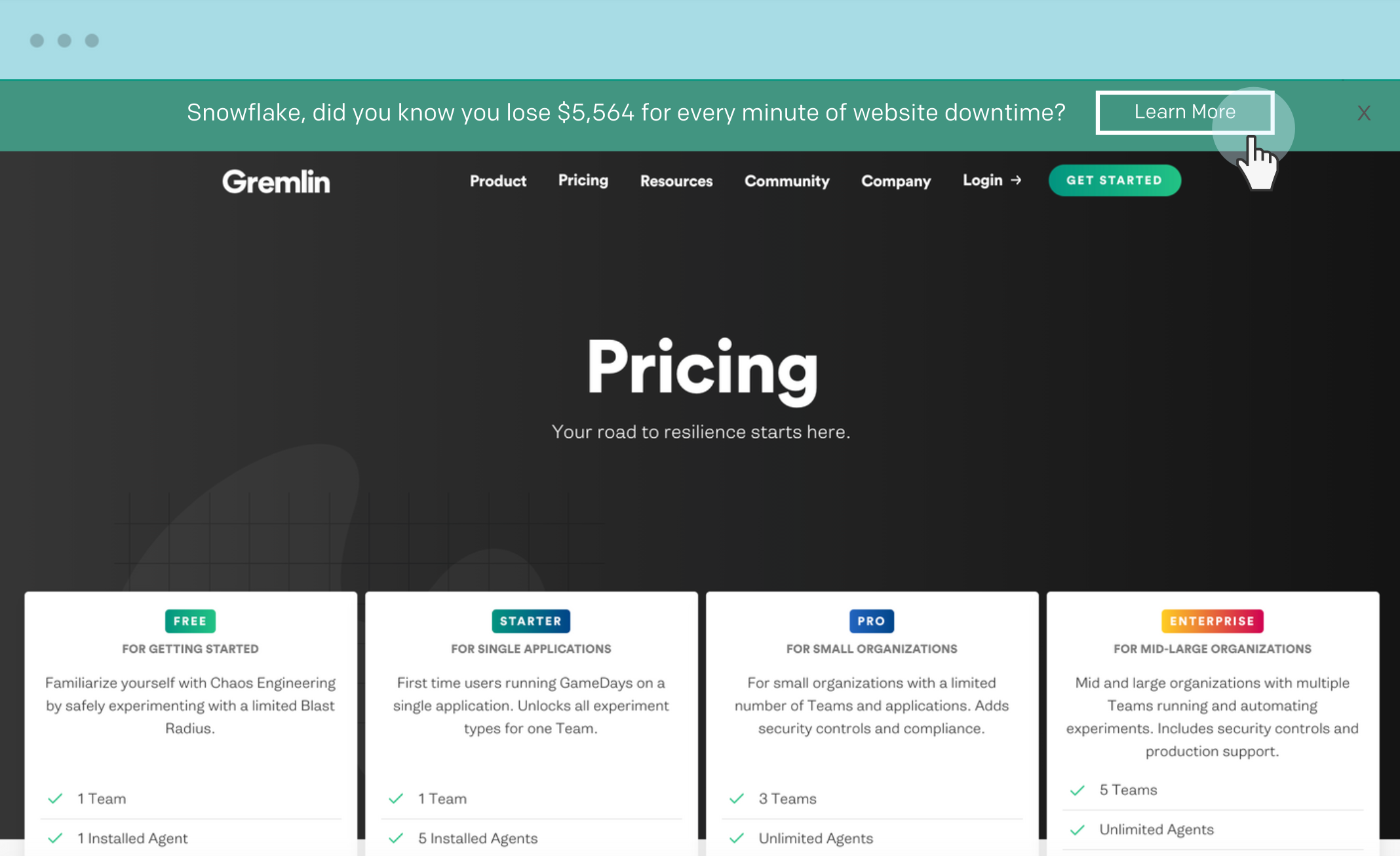
A personalized banner typically drives a 4% CTR and a healthy 30%-60% conversion rate after click-through. Image Credits: Mutiny
A gift goes a long way
Hey, we’ve got a gift for you!
See? That got your attention. And that will be true for your target accounts, too, when they land on your site and you offer them a gift. Implementation is pretty simple here — you only need to create the side pop and route the visitor to a form to fill out their address info. Finally, you’ll need to choose a way to fulfill the offer using a platform like Sendoso, Postal or Alyce.
P.S. Sorry to catfish you about the gift, although many would argue that knowledge is the ultimate gift.
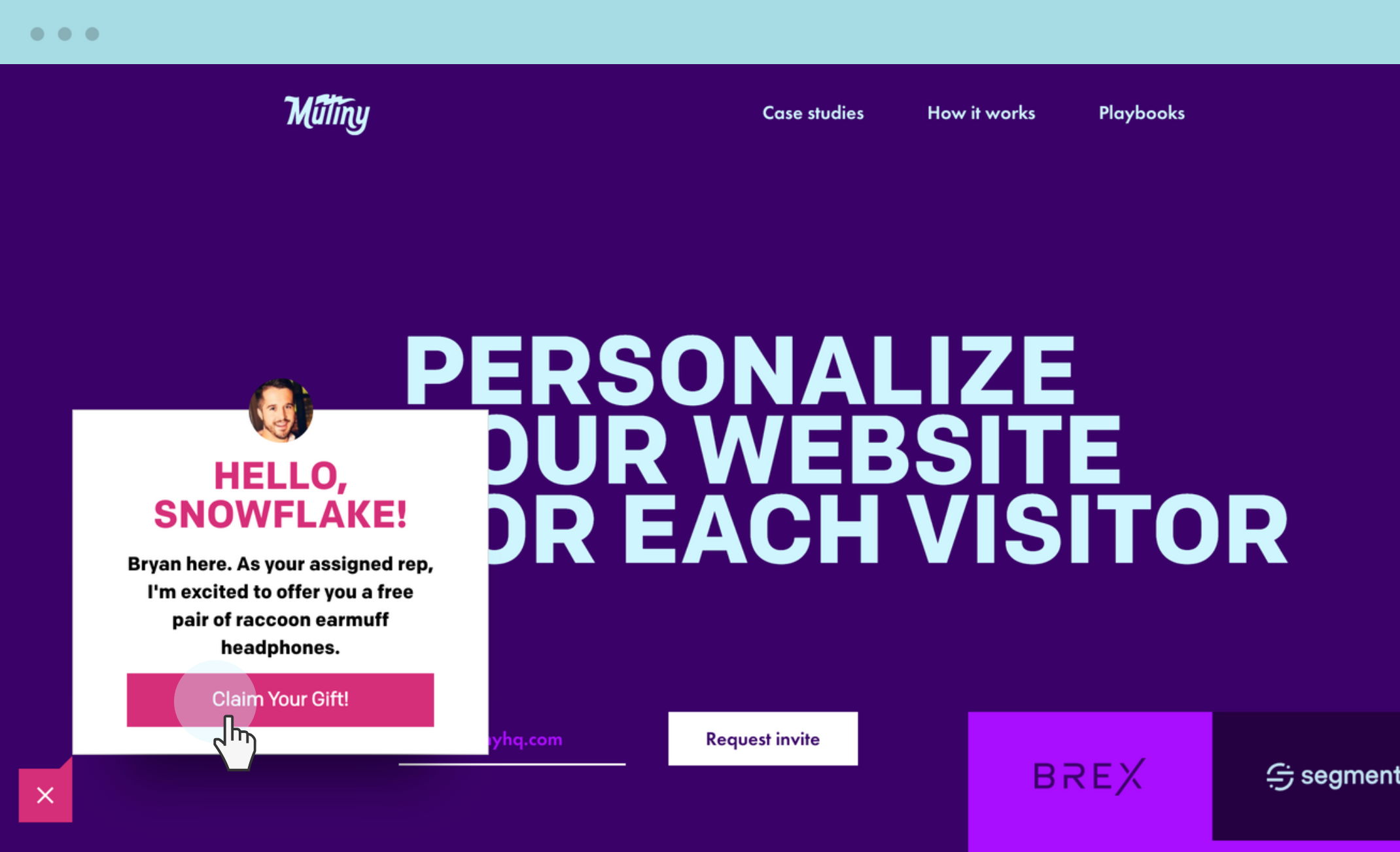
We’ve seen a Mutiny customer achieve a 20% CTR with this tactic, or about one in five target accounts. Image Credits: Mutiny
Outbound thoughtfully
In B2B marketing, as in life, consistency is key.
Try this. Using Salesforce data, create a personalized landing page for a target account. Your SDRs can send this page via email to a target account.
You can also capture relevant inbound visitors by using IP data as a source to create a side pop that drives to the landing page you’ve already built. This connects your inbound and outbound efforts. Once the landing page has been visited, you can follow up with a simple email with a link to book time with your rep — “Hey there! Looks like you checked out the page we made for you. Any questions I can answer? Feel free to book time here.”
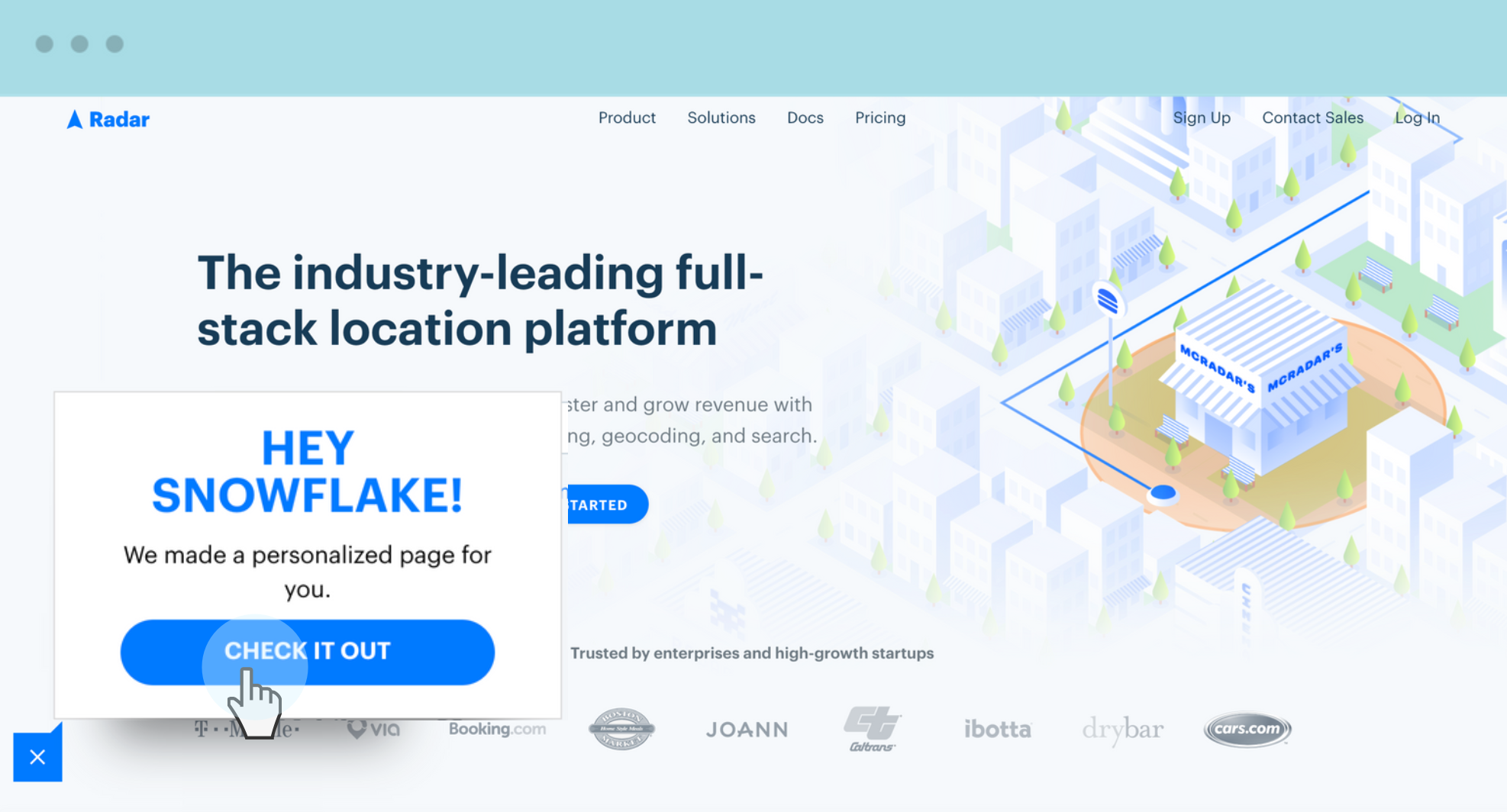
Image Credits: Mutiny
Spending money on ads?
Urchin Tracking Modules (UTM). Without good UTM practices, it would be much harder to know where traffic is coming from, create solid analytics dashboards or to make decisions about what content to invest in.
We’ve pulled together a few of the basics and best practices for setting up UTMs for common platforms like LinkedIn, Demandbase and Facebook. We also show you how to leverage UTMs for unique personalizations (by role for example) that are otherwise difficult to do. Personalizing the landing page to match the ad increases ad efficiency and conversions.
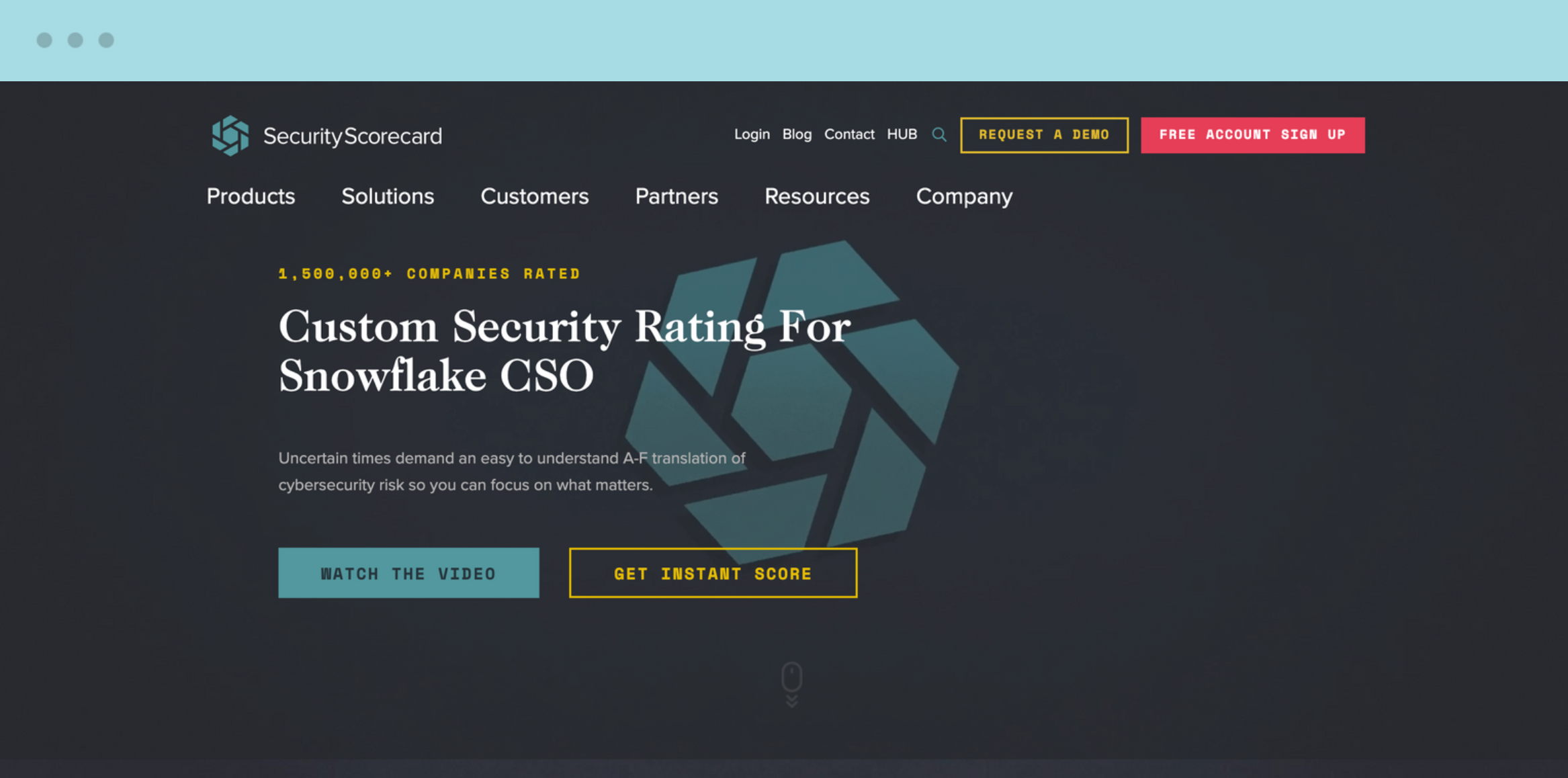
Image Credits: Mutiny
Curate resources for target accounts
As you encounter target accounts in specific verticals, you’ll begin to amass a library of relevant content and helpful links. Don’t keep it all to yourself!
Instead, aggregate those content pieces for your target accounts and include them on a personalized inbound page, or send them in an email as a personalized outbound page. This can be implemented fairly quickly if you already have the content on hand.
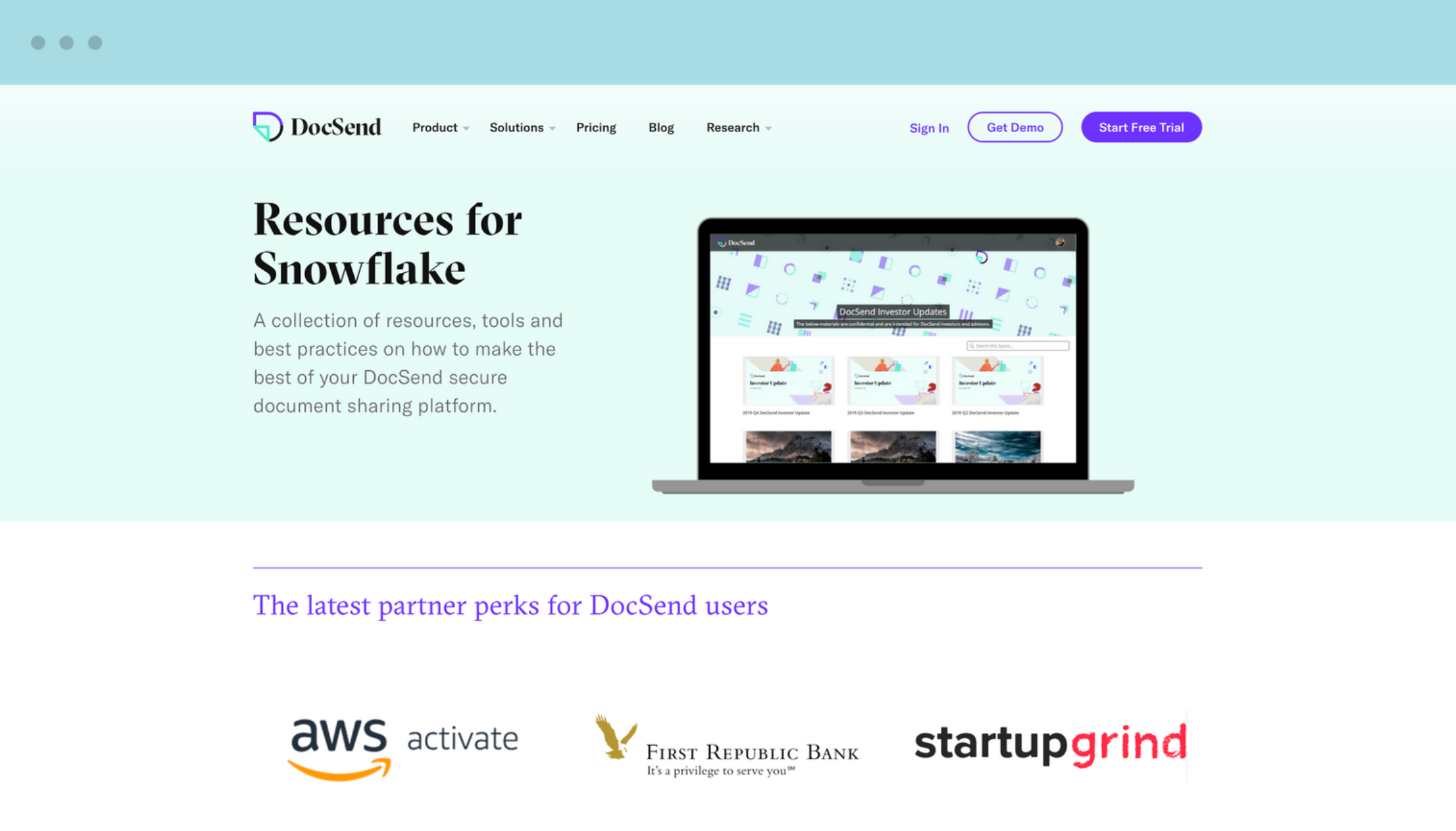
Image Credits: Mutiny
Don’t forget about active deals
If you’re already amidst a deal, multiple contacts at a target account may reach your site. Having a streamlined, relevant response can create a great impression and even accelerate the deal.
Use Salesforce to identify contacts at target accounts and create a personalized banner that briefly gives context on the deal process and tells them who to contact. In the banner, you can easily link to the email of the proper person on your team.
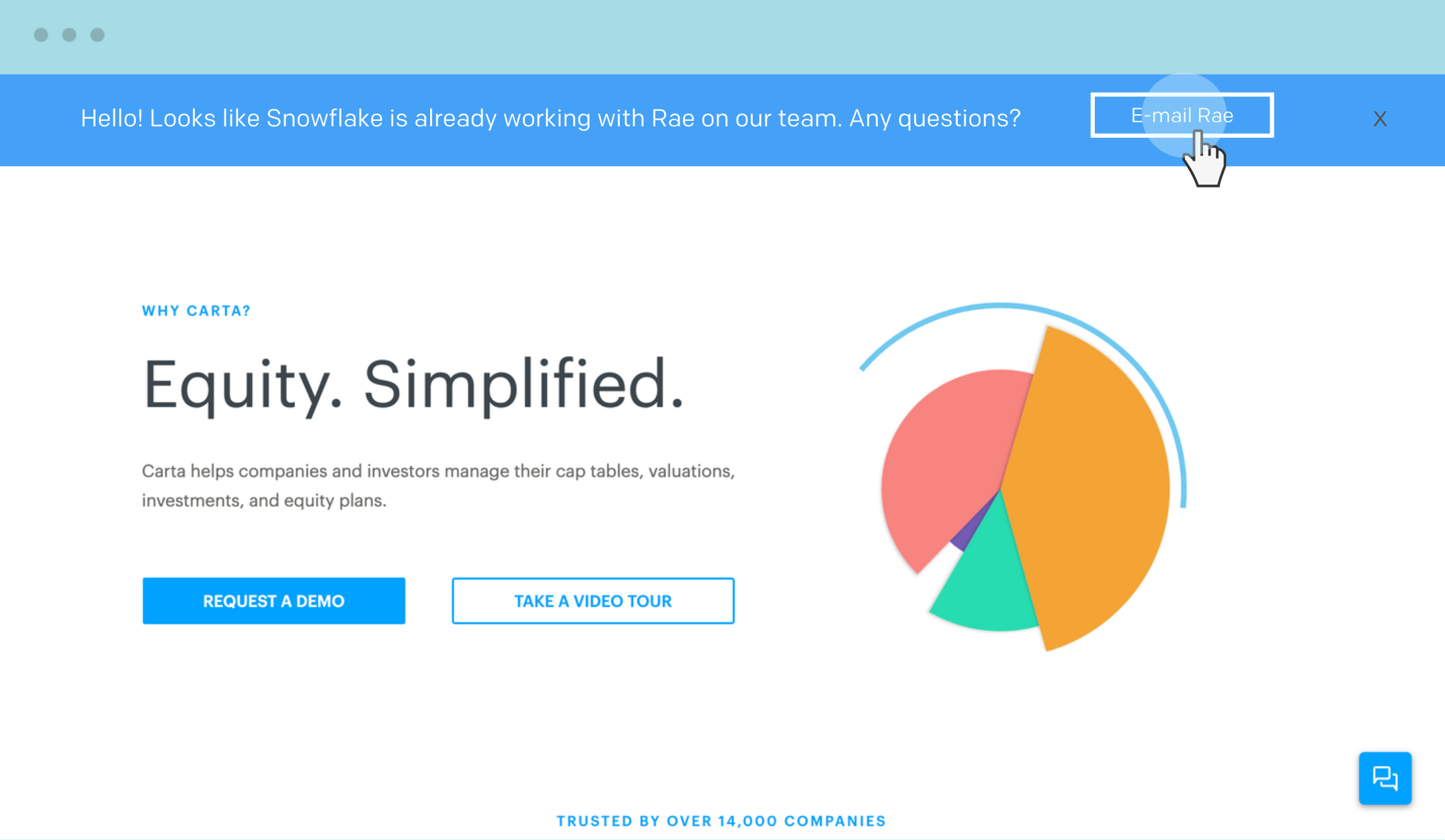
Image Credits: Mutiny
And there you have it. Feel free to remix and remake these tactics in ways that make sense for your own programs.
